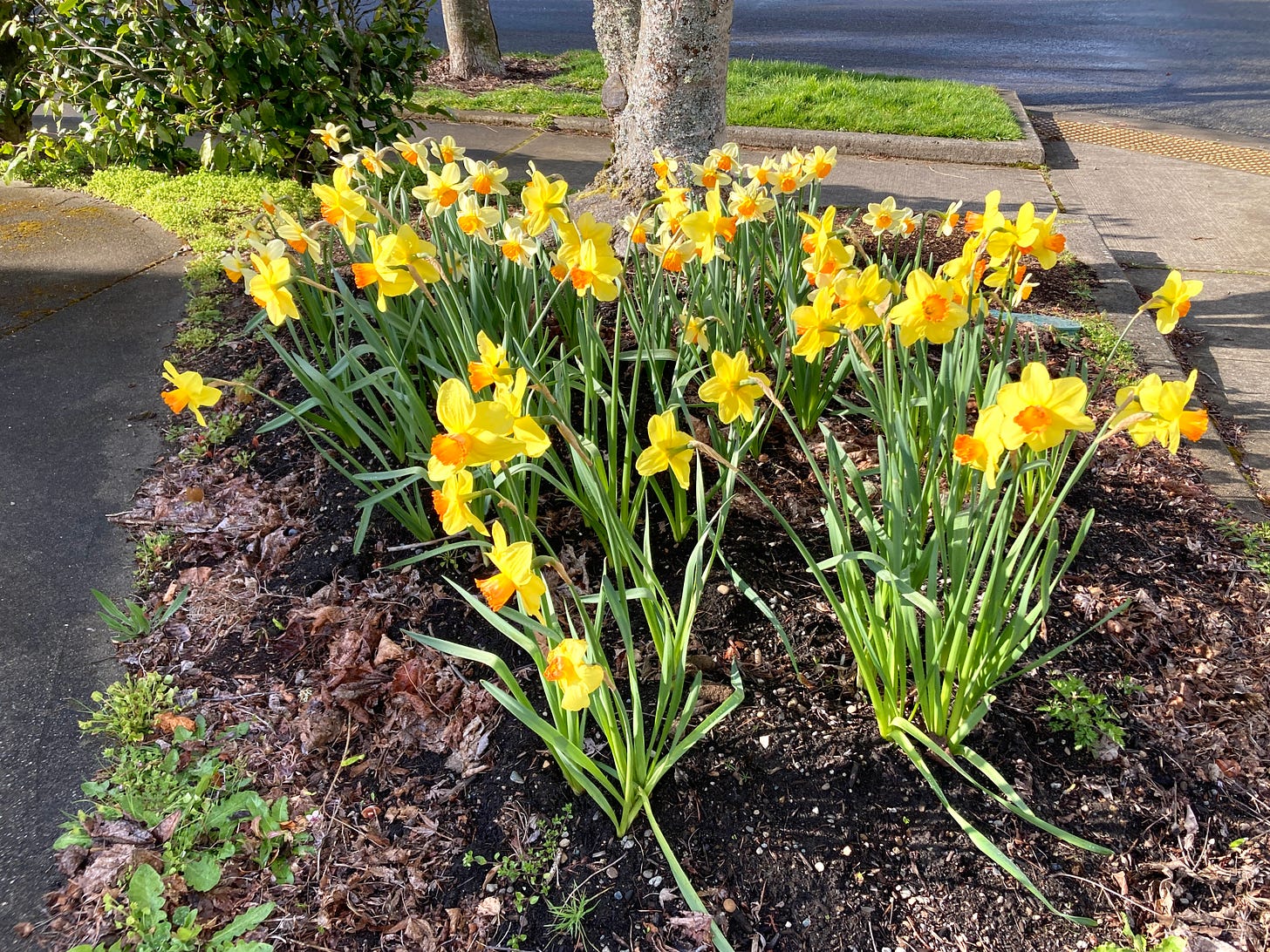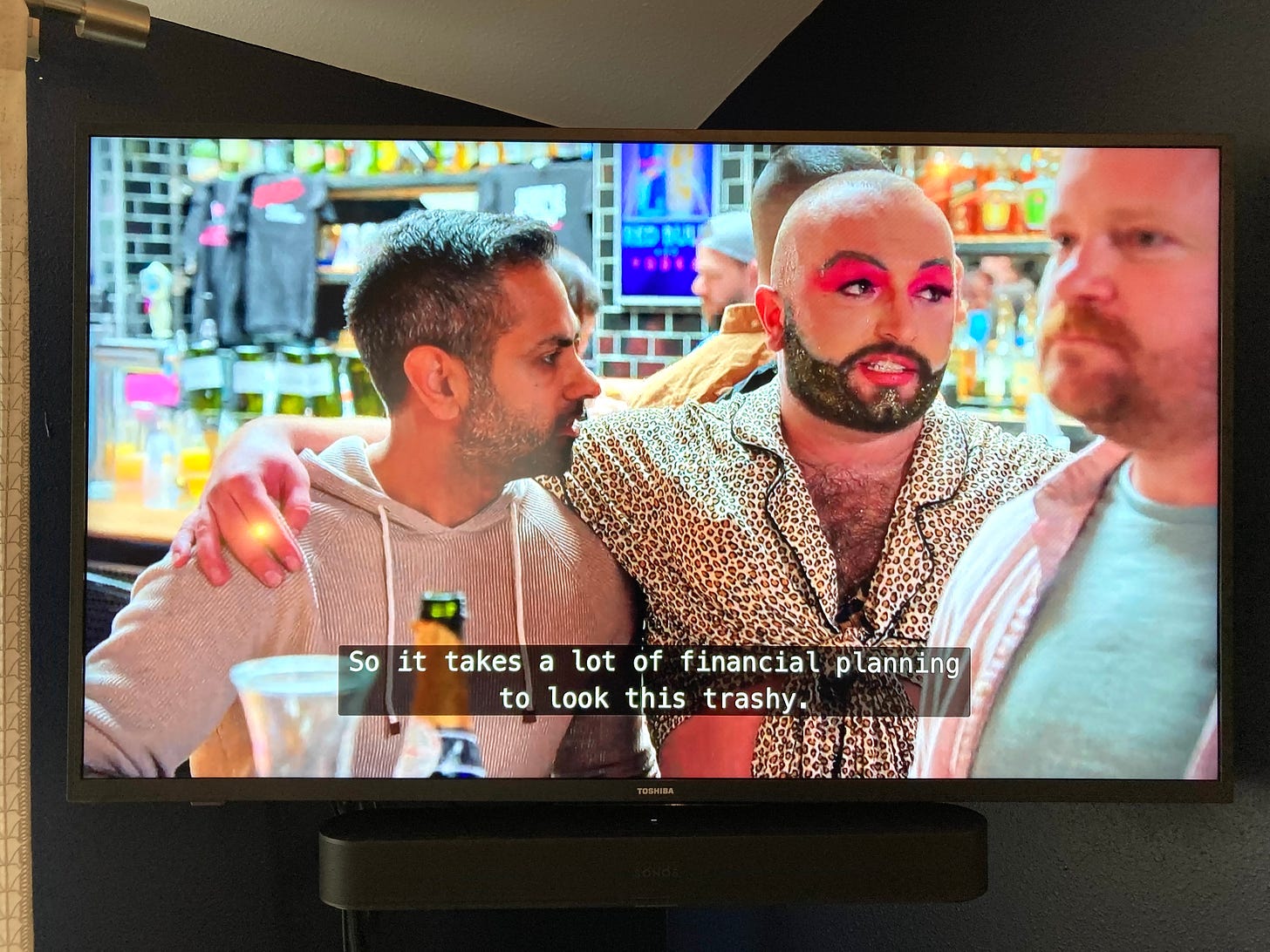Don't make plans, give gifts
Most of us overplan, or avoid planning entirely—but there's a better way
Your Five-Year Plan is a newsletter about embracing life’s profound uncertainty.
Maybe your own plans went up in flames; maybe you’re considering a big, scary leap. This is your trusty companion while you’re writing the next life chapter.
Welcome to the conversation—and to the adventure that unfolds when your plans go sideways. This is letter #2. ✨
☀️ How was your week?
I’m so grateful for the response to my first Substack letter. Turns out, baring your soul for public consumption feels vulnerable! But through your emails, phone calls, texts, comments, and subscriptions, I felt buoyed by the best darn cheerleading squad a girl could ask for. You, dear reader, are my inspiration to keep writing. For that, I offer you a big virtual hug, and my sincerest thanks.
Have you watched Ramit Sethi’s new show, How to Get Rich? I loved the breadth of financial situations, hangups, and questions addressed over the course of its eight bingeworthy episodes. Even better, it spurred fascinating IRL conversations about how I define a rich life, and how my loved ones define theirs. My only critique? Ramit wasn’t quite as snarky on Netflix as he is on Twitter, but that’s a minor quibble.
On to today’s letter!
Don’t make plans, give gifts
“There are two kinds of people in the world: those who divide the world into two kinds of people, and those who do not.” –Robert Benchley
It’s no accident that the two professional credentials I’ve earned—the CERTIFIED FINANCIAL PLANNER™ certification and the Registered Life Planner® one—both include the word “plan.”
When it comes to thinking about life and money, we tend to use a planning framework, dividing people into one of two camps: those who adore planning, and those who abhor it. Let’s call them the Planner and the Plan-Avoidant, respectively.
Until recently, I approached my own life and finances through a planning framework. (I’ll bet you can guess which camp I fell into!!)
The Planner lives for tomorrow. They view their Present Self largely as a stepping-stone on the way to a fully-actualized Future Self.
There are a few hallmarks that help us spot Planners in the wild. They approach their limited time on this earth strategically, and tend to achieve the (usually ambitious) life and financial goals they set for themselves. Mapping out a step-by-step roadmap from Point A to B is their kink. When they set their mind to something, they follow through—and it’s inspiring to watch. In a financial context, we call them “savers.”
The Plan-Avoidant lives for today. They’re interested in the experience of their Present Self; their Future Self is out of sight, out of mind.
Plan-Avoidants have their own set of defining features. They have a relaxed, open perspective on life and money—perhaps an abundance mindset, a certain joie de vivre. They usually welcome spontaneity and new experiences. The word “should” doesn’t feature prominently in their vocabulary. They’re more likely to say “Why not?” In a financial context, we call them “spenders.”
There are benefits to each approach—and potential drawbacks, too.
Planners don’t actually have control—just the illusion of it. (Planning, as I learned, doesn’t prevent things from falling apart. An inconvenient truth!)
They might get attached to the planning process, which can become a sophisticated and socially-acceptable form of procrastination. They can be perfectionistic, anxious, or rigid. Living with an eye trained on the future means they’re not present.
They might become fragile when life goes off-script. Or, devastatingly, not enjoy the goals they worked so hard to reach.
Some Plan-Avoidants can be hot messes, upon closer inspection. Making in-the-moment decisions might deliver them into situations where they lack control or agency. Not considering tomorrow can bring financial consequences—some disappointing, others disastrous.
Looking back at their choices, they might discover their laissez-faire approach caused them to squander time, money, or potential: a recipe for regret.
There’s a better way.
I’ve got good news: while many of us will probably pass through Planner or Plan-Avoidant territory—perhaps spending many years in one camp or the other—neither has to be our final destination.
There’s a saner, more enjoyable way to think about life and money: by abandoning the planning framework in favor of a gift-giving framework.
Some of you have already discovered this approach. Addressing those of you, I must ask: why didn’t you tell me about it sooner?!
The Gift-Giver values their Present Self’s experience equally to that of their Future Self. They approach life as an opportunity to give each version of themselves a series of gifts:
They give gifts to their Present Self that don’t come at the expense of their Future Self.
They also give gifts to their Future Self that—you guessed it!—don’t come at the expense of their Present Self.
Let’s break each point down a bit further, shall we?
The Gift-Giver values their Present Self’s experience equally to that of their Future Self.
They know that the present moment is the only one that matters. The past is gone, and the future is an abstraction—one that isn’t guaranteed. Life is simply one present moment stacked upon the next, ad infinitum.
If that once-abstract future does arrive, though, the Future Self will have become the Present Self. Thus, the need (and desire!) to look out for one’s Future Self today.
The Gift-Giver approaches life as an opportunity to give each version of themselves a series of gifts.
Viewing life as an opportunity gives it weight, a sense of gravity; opportunities are special and rare enough to avoid frittering away impulsively.
But this perspective also demands a sense of lightness and joy—because really, how lucky are we to be alive?! It’d be crass to view an opportunity as an obligation.
Why make gifts the center of this framework? Consider the last time you unwrapped one.
Maybe someone you love placed it in your outstretched hands, their smile growing as they anticipated your reaction. You felt the weight of the box, and considered shaking it (gently!!) to help you guess what was inside. You admired the care that went into adorning it: colorful printed gift wrap, the ribbon icing on the cake. You opened it deliberately or all at once, ready to be surprised and delighted by what you found.
So: unwrapping a gift, or tackling (or avoiding) a to-do list. Gift-giving or planning. Which sounds more fun?
The Gift-Giver gives gifts to their Present Self that don’t come at the expense of their Future Self.
By setting up appropriately-sized, automatic deferrals into our savings and investment accounts, we’ve successfully paid our Future Self first. Check!
With that taken care of, it’s time to get a PhD in delighting ourselves. As Mary Oliver reminds us, “Joy is not made to be a crumb.”
Every time we dedicate finite resources—money, time, energy—to our Present Self, we learn which types of “investments” pay the biggest joy dividends. What’s the ROI on $30 spent at the local art-supply store, versus a splashy weekend getaway, versus a contemplative walk in the woods? What’s the payoff in warm fuzzies after volunteering or donating to charity?
With this approach, we also practice the underrated art of receiving.
We’ll give ourselves some gifts that wind up falling flat—that’s the nature of gift-giving. (Like when Dad gets yet another tie for the ninth consecutive Father’s Day.) Failures contain helpful information about what might work better next time.
Adopting a gift-giving framework doesn’t mean giving up big goals, like running a marathon. It simply asks us to enjoy the sensation of our legs carrying us through each training run (the process) rather than living for the finish line (the outcome).
The Gift-Giver also gives gifts to their Future Self that don’t come at the expense of their Present Self.
In practice, we do this by:
Getting curious. What would bring our Future Self delight or peace of mind?
Giving them the gift of taking the first step in that direction. (The next step can happen tomorrow.)
Closing our laptops and reentering life as our Present Self.
When we get curious about what might bring delight or peace of mind to our Future Self, we’re not abandoning the Responsible Human Checklist that a financial planner might hand us—we’re looking at it through a different filter.
Building an emergency fund is a precious gift to our panicked, newly-laid-off self. Contributing to our 401(k) is a precious gift to our elderly self. And drafting an estate plan is a precious gift to our surviving loved ones. What beautiful opportunities to show that we care!
Getting curious allows us to consider other, non-financial elements of the good life that our Future Self might value: building a strong community, a resilient body, a healthier relationship to stress. These are priceless assets that proponents of the planning framework tend to gloss over.
In many cases, we can afford to focus on just one #Adulting Project at a time—as long as we keep our gentle pace consistent. Remember the tortoise and the hare?
When the first step is done, closing our laptops allows us to—as the aforementioned Ramit Sethi says—“live outside the spreadsheet.” Life’s purpose, I guarantee you, is not to efficiently complete a bunch of checklist items.
And closing our laptops requires us to face this question: am I content in this moment? Or am I creating a life whose subtext is “I’ll be happy when…”?
The magic happens when we do both of these things: securing peace of mind for tomorrow, while also prioritizing joy today. And doing both with a sense of absolute gratitude. Lest we forget: we are all ridiculously lucky to be here together.
The planning framework doesn’t place joy at its center. The gift-giving framework does. Fortunately, we all get to choose our perspective.
What’s yours?
💬 What do you think?
I’m curious to hear from you. What’s the most memorable gift you’ve ever given your Present Self? Or a gift you once gave your Future Self, that you’re extra-grateful for today?
Had your own plan-in-flames experience? Taking a leap into the unknown? I’d love to hear more. Just hit “reply” to get in touch, or introduce yourself here.
Warmly,
Maddie








Spending time with my granddaughter with no agenda
A trip to Ireland. To touch base to my lineage. To learn about the people and their/my histories. Expensive but well worth the experience. My heart still sings when I think about the trip!